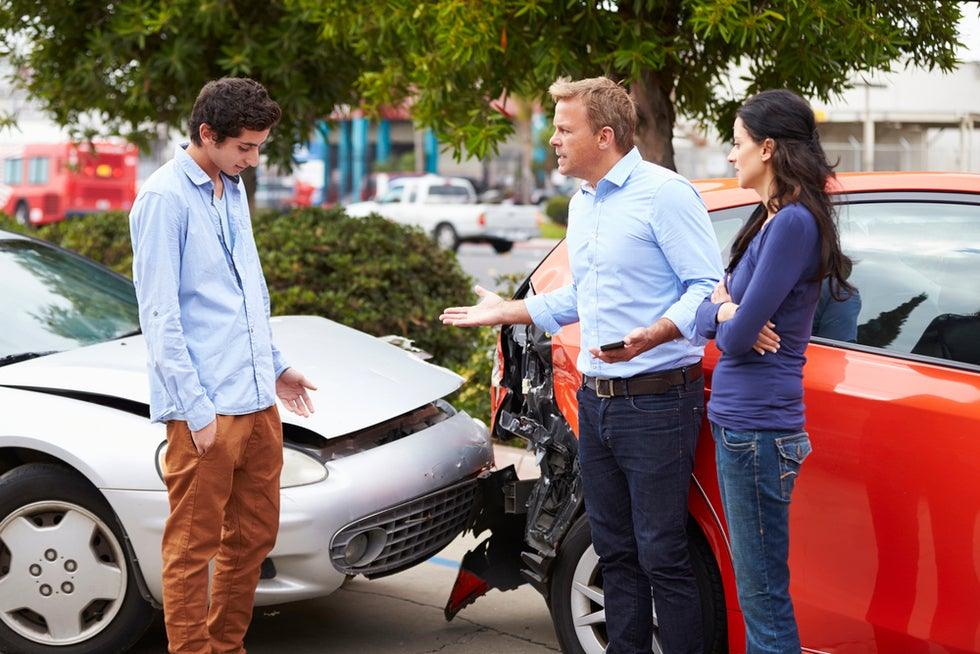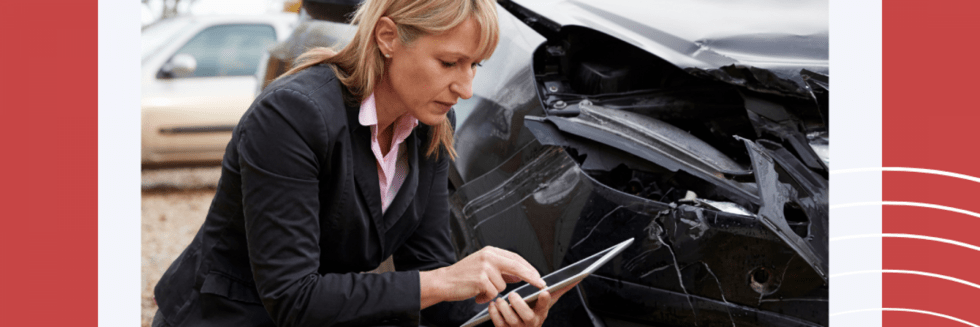Picture this: you’re in a fender bender on the streets of Los Angeles, and now you’re tangled up in the mess of determining fault in a California car accident. It’s not just about who hit whom – it’s about understanding how negligence is established and what evidence will tip the scales. Whether it’s dealing with police reports or dissecting road conditions, knowing these rules could be crucial.

You’ll also get into how insurance companies step onto the scene after an auto accident. They’ve got their own playbook for figuring out who pays what. And if things don’t seem right, we’ll cover how to challenge them effectively.
Then there’s navigating through California law itself—getting familiar with vehicle codes that impact liability can make all the difference when seeking compensation for your losses from medical expenses to property damage.
Understanding Fault in California Car Accidents
Fault determination in a California car accident can feel like untangling a giant knot. It’s not just about who hit whom; it’s about understanding the rules of the road and how they apply to your unique situation.
The Role of Evidence in Determining Fault
Evidence is king when it comes to determining fault after a traffic accident. Think of evidence as pieces of a puzzle that, when put together correctly, paint the full picture for everyone involved—from police officers to insurance adjusters.
Police reports are often seen as one piece of incontrovertible evidence because they provide an official account from law enforcement on what happened at the scene. But don’t overlook witness statements either. These personal accounts can offer crucial details that may not be apparent from physical damage alone or might contradict other narratives.
Sometimes these documents reveal clear violations such as running a red light which can make fault seem obvious but remember: every detail counts and even small factors could shift liability significantly.
Comparative Negligence and Shared Fault
In some cases, you might find yourself playing both victim and culprit due to California’s comparative negligence system. This isn’t your high school blame game—California understands that sometimes more than one party contributes to an accident. In fact, each driver negligent enough gets their share under this rule.
This means if you’re partly responsible for causing an auto accident—even if it’s just 10%—your compensation will be reduced by your percentage of fault accordingly. So say goodbye to all-or-nothing claims because here we deal with shades rather than absolutes when sharing out accountability pie slices among drivers involved.
Traffic Laws and Violations Impact on Fault
Obedience matters—and we’re not talking about dog training here. To drive safely is also obeying traffic laws designed specifically to avoid injuring others around us while behind the wheel of a motor vehicle. On California roads, driving involves a hefty dose of common sense and respect for fellow travelers along the way. But there are still those times where certain individuals decide to play fast and loose with regulations and end up facing consequences, especially when it comes to establishing negligence in a post-accident scenario.
Consider this hypothetical: someone blasts through an intersection despite the signal. Now they’re presumed negligent unless proven otherwise—which basically means they have to step up to the plate and demonstrate that they weren’t the cause of harm that occurred. Plus, violating specific provisions within California Vehicle Code does no favors for anyone trying to establish innocence. No matter how hard you try to point your finger elsewhere, it’ll inevitably come back to bite you right on your bumper.
So your best bet? Always exercise reasonable care and stick with basics like proper lane usage, signaling turns, stopping at appropriate moments—it’s really quite simple folks. Breaking down even complex situations makes it possible for us all see clear lines between right and wrong given any context—action or reaction; sequence events leading up collision itself ultimately decides who hangs their hat terms legal responsibility.
Call our personal
injury lawyers today
Navigating Insurance Claims After an Auto Accident
The Investigation Process by Insurance Providers
After a fender bender or worse, the insurance companies become detectives. They dive into the nitty-gritty to figure out who’s on the hook for what happened. First off, they’re going to want every shred of evidence you’ve got—think police reports that jot down all those important details right after your car took a hit.
But wait, there’s more. These insurers will chat up anyone with two cents to add about your accident—the drivers involved, witnesses on the scene—you name it. It’s like putting together a puzzle where each piece could sway who gets blamed and how much dough is at stake.
Your physical examination might also be part of their sleuthing routine because let’s face it: if you’re hurt, someone has to pay up for those medical bills.
Strategies Insurance Companies Use to Determine Fault
You think playing chess requires strategy? Try figuring out fault determination rules in California when it comes to auto accidents. The bigwigs at insurance firms have this playbook full of moves designed just for such occasions—they’ll check if any traffic laws were tossed aside or whether someone was driving like they left common sense back home on their couch.
Sometimes these companies can seem colder than an icebox—that’s why knowing how they operate can give you some warmth when things get chilly post-accident. Did another driver blow through a red light? Or maybe failed miserably trying not to skid across slick roads? That kind of info helps insurers decide who owes whom in this vehicular blame game.
Disputing an Insurance Company’s Fault Determination
All set but don’t agree with what your insurance provider says about whose fault it was? You’ve still got cards left in hand my friend. But before we go calling bluff against them—let’s talk steps.
- Gather your own stash of proof—a solid police report backing you up goes far here; bring along witness statements too while you’re at it;
- Show them what “reasonable person” means—if everyone agrees that running over Santa Claus figurines during Christmas isn’t reasonable driving behavior (it really isn’t), use similar logic;
- If things escalate quicker than heartbeats during horror movies and talking doesn’t cut anymore – speak with an attorney.
To figure out who pays in California accidents, insurers have strategies galore. They look at traffic laws broken and whether someone was driving like they forgot their common sense.
If you disagree with the insurance verdict on fault, gather evidence like police reports and witness statements. Show what ‘reasonable’ means or seek legal help if needed.
Legal Aspects of Car Accidents in California
If you’ve been part of a car accident in the Golden State, wrapping your head around the legal mumbo jumbo can feel like trying to solve a Rubik’s Cube blindfolded. But fear not. We’re about to make sense of the laws and rules that could impact your case.
Understanding California Vehicle Code and Negligence
The road to understanding fault starts with getting cozy with the California Vehicle Code. This hefty book is like the holy grail for traffic law attorneys because it lists all no-nos drivers need to avoid on state roads. If someone breaks these sacred rules and causes an accident, they might as well have “negligent” stamped on their forehead.
Negligence isn’t just a fancy word lawyers throw around; it’s got meat on its bones. It refers to when someone doesn’t exercise reasonable care while driving—like texting their bestie or doing their makeup at 65 miles per hour—and ends up causing harm. So if another driver ignored these guidelines and turned your commute into chaos, this code helps show they were legally out of line.
The Concept of Reasonable Care in Determining Negligence
Let’s talk about playing nice on the road—or what we call exercising reasonable care. Imagine you’re cruising down Sunset Boulevard: The sun is shining, life’s good—but then some yahoo speeds past running every red light along his way? That guy is NOT using reasonable care by any stretch.
In legalese land, whether or not a driver has exercised this kind of caution matters big time—it’s how negligence gets pinned down faster than an opponent in a wrestling match when accidents happen. You see, courts think about what Joe Average Driver would do under similar circumstances—the ol’ “reasonable person” standard—to figure out who should’ve done what differently during that fateful drive through Los Angeles (or anywhere else across California). They ask questions like: Did he obey traffic laws? Was he aware but ignoring lousy weather conditions? Basically…did he act as any sensible person would?
personal injury lawyer
get a free consultation
Navigating Insurance Claims After an Auto Accident
Filing insurance claims after swapping paint with another vehicle isn’t exactly anyone’s idea of fun times at Disneyland.
The Investigation Process by Insurance Providers
Here comes Sherlock Holmes—also known as your friendly neighborhood insurance provider investigator—who’ll dig deep into the details of claims, looking for clues and piecing together facts. They’re on a mission to sniff out any foul play and make sure that only legitimate claims are paid out. So, when you file a claim, expect it to be examined with a fine-tooth comb; these pros don’t miss a beat.
Determining negligence is about showing a lack of reasonable care—think ignoring traffic signs or texting while driving. Courts use the “reasonable person” standard as their measuring stick.
Filing an insurance claim? Get ready for some detective work. Insurers investigate thoroughly to make sure only legit claims get paid.
Financial Implications of Car Accidents for Victims
The moments after a car accident can be overwhelming, but the financial aftermath? That’s often just as jarring. Let’s say you’re cruising down Los Angeles’ Sunset Boulevard when suddenly you’re side-swiped by someone who ran a red light. You’ve got medical expenses stacking up faster than California traffic and lost wages burning holes in your pockets.
Dealing with Medical Bills Post-Accident
If you’ve been injured in an auto accident, hospital bills will likely start flooding in before you’ve even had a chance to catch your breath. It might feel like trying to sip water from a fire hose. The key is not to panic but rather focus on organizing these bills. First things first: check out whether your insurance or the at-fault driver’s policy covers immediate medical costs or if they only reimburse later—which means keeping meticulous records is crucial.
You should also know that California law allows victims of negligence on the roads to seek compensation beyond what insurance offers—think future medical care related to injuries sustained from that reckless dash through the red light.
Seeking Compensation for Property Damage and Injuries
A wrecked car equals property damage and let me tell ya, dealing with insurers over this can be about as pleasant as stepping on Legos barefoot—painful and frustrating. So here’s how it usually goes down: You file a claim detailing every scratch and dent caused by our friend ignoring their traffic signal duties. Insurance companies then send out adjusters quicker than ice melts in Death Valley heat—but watch out—they’re trained to minimize payouts.
To combat this, arm yourself with evidence—a police report showcasing fault determination rules broken during your crash could help immensely because hey, nobody likes losing money due to someone else playing fast-and-loose with road conditions.
Fighting tooth-and-nail against tightfisted insurance providers isn’t everyone’s cup of tea; some prefer legal support from pros who eat comparative negligence breakfasts daily—and yes, I’m talking about personal injury lawyers who specialize in making sure victims get fair shakes after accidents shake up their lives financially speaking.
Conclusion
Wrapping it up, knowing the ins and outs of determining fault in a California car accident is essential. You’ve learned that evidence is king and how traffic laws can tip the scales.
Dive into insurance claims with confidence; remember their tactics for pinning down who’s liable. If you disagree, stand your ground—you have options to challenge them.
Keep this close: California law shapes negligence cases like clay—knowing vehicle codes could be your best defense or offense when dealing with property damage or injuries.
In short, drive safely out there. But if trouble finds you on those busy Los Angeles streets, these insights will help make sure justice—and compensation—are on your side.



